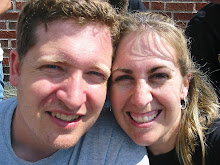I am still working on the experiment I wrote about in the last post but I am now adding on another experiment that takes the next step. The first experiment (from the last post) will confirm that my protein of interest, or rather a portion of my protein of interest, is exerting intranuclear control. The protein I am looking at is called p75 which is a single pass transmembrane receptor. This means that a portion of the protein sticks out into the environment, a small portion passes through the cell membrane and the remaining portion (the intracellular domain or ICD) sticks into the cell. Now, unlike fruit fly scientists who, in attempt to be funny, name their genes things like sonic hedgehog or SOS (son of sevenless), most of the rest of us are pretty boring. P75 is protein (the P) that has a mass of 75 kilodaltons. P75 is a receptor protein that functions to bind neurotrophins such as Nerve Growth Factor (NGF). NGF is call a ligand. The whole purpose of a ligand binding to a receptor is to cause a change in gene expression so that a cell can respond to it's surroundings. This process of intracellular communication or cell signaling is what fascinates me. This process is very dynamic and can be relatively simple or incredibly complex. The process often depends on the environment and the context in which the signal is received by the cell. For example, the accepted dogma for p75 signaling is that when p75 binds to a ligand, an enzyme called gamma secretase clips off the ICD which then through some mechanism is transported to the nucleus where it causes the cell to undergo apoptosis (programmed cell death or more literally, cell suicide). However, this is not always the correct. We have shown that our tumor cells actually proliferate under treatment with certain p75 ligands. Also, recent research from another lab in NY has shown that the p75ICD binds to the promoter region of a gene called Cyclin E1. Cyclin E1 is the protein that jump starts the synthesis of DNA replication in a cell in order for that cell to undergo mitosis. In light of these data, we have decided to see to what else the p75ICD is binding once it translocates to the nucleus. We are doing this by a method called ChIP Seq. That stands for Chromatin Immunoprecipitation sequencing.
In short (the protocol I am using is 15 pages long, so yes, this will be short), I will be forcing p75 to go into the cell nucleus where it will presumably bind to whatever sequence of DNA it binds to. I will then crosslink p75ICD to the DNA with formaldehyde, do a nuclear isolation and then clip the DNA into lengths of about 200-500 base pairs with a sonicator. Once I have confirmed the length and amount of DNA with it's associated proteins, I will apply the DNA/protein to some magnetic beads that are coated with an antibody that recognizes only p75. Once p75 and it's associated DNA is bound, I will isolate the beads, wash away any extra, non-bound protein/DNA, finally elute the p75/DNA into a small tube. Once I have done this, I will reverse the crosslinking, degrade any residual protein and RNA and hopefully be left with nothing but strands of ~500 base pairs long segments of DNA that were bound to p75. The trick now is to sequence the DNA that I have obtained. To do this, I need a primers which are small stretches of DNA of a known sequence. These primers will bind to my DNA and enable me to enhance and then sequence the DNA. The problem is that I don't know the sequence to begin with so how can I design primers? I will do that by adding a stretch of DNA to each 500 base pair piece of DNA I isolated. Once I have done that, I can enhance each strand of DNA by PCR and then have the amplified DNA sequenced. The results will hopefully show a number of genes that were bound to the p75ICD in Vivo.
I began the first set of experiments on Monday and am having problems getting enough DNA to move on to the immunoprecipitation step. I'll keep you updated.
Thursday, February 24, 2011
Subscribe to:
Posts (Atom)
